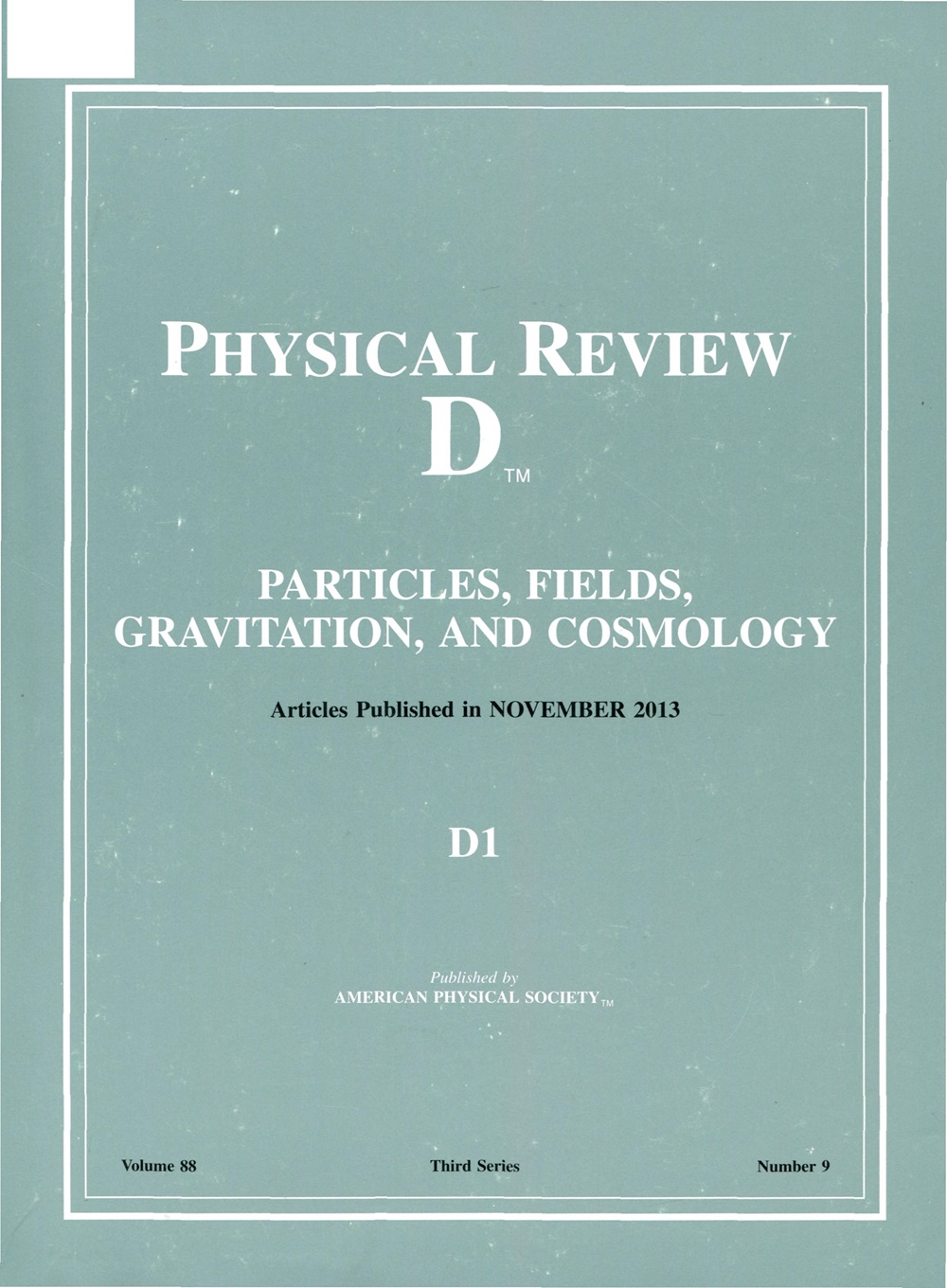Small- x evolution of the dipole amplitude in momentum space: Forward-off-forward correspondence
IF 5
2区 物理与天体物理
Q1 Physics and Astronomy
引用次数: 0
Abstract
We have shown that the small-x evolution of the leading-log dipole scattering amplitudes, both pomeron and odderon, in the momentum space can be completely determined by the evolution of the respective amplitudes, with rescaled momenta. In position space, if there is translation symmetry (assumption of a large nucleus), the dipole cross section depends on the positions of quarks and antiquarks only through their separation. The present study is an equivalent proposition in the momentum space—where translation symmetry in momentum bifurcates the amplitudes into two translationally symmetric functions along the求助全文
约1分钟内获得全文
求助全文
来源期刊

Physical Review D
物理-天文与天体物理
CiteScore
9.20
自引率
36.00%
发文量
0
审稿时长
2 months
期刊介绍:
Physical Review D (PRD) is a leading journal in elementary particle physics, field theory, gravitation, and cosmology and is one of the top-cited journals in high-energy physics.
PRD covers experimental and theoretical results in all aspects of particle physics, field theory, gravitation and cosmology, including:
Particle physics experiments,
Electroweak interactions,
Strong interactions,
Lattice field theories, lattice QCD,
Beyond the standard model physics,
Phenomenological aspects of field theory, general methods,
Gravity, cosmology, cosmic rays,
Astrophysics and astroparticle physics,
General relativity,
Formal aspects of field theory, field theory in curved space,
String theory, quantum gravity, gauge/gravity duality.
 求助内容:
求助内容: 应助结果提醒方式:
应助结果提醒方式:


